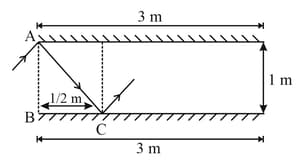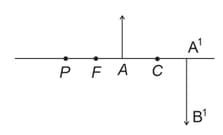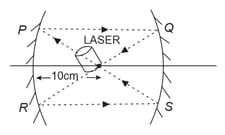Subject Experts Solutions for Chapter: Light, Exercise 2: PRACTICE QUESTIONS (COMPETITION WING)
Subject Experts Physics Solutions for Exercise - Subject Experts Solutions for Chapter: Light, Exercise 2: PRACTICE QUESTIONS (COMPETITION WING)
Attempt the free practice questions on Chapter 4: Light, Exercise 2: PRACTICE QUESTIONS (COMPETITION WING) with hints and solutions to strengthen your understanding. Pearson IIT Foundation Physics solutions are prepared by Experienced Embibe Experts.
Questions from Subject Experts Solutions for Chapter: Light, Exercise 2: PRACTICE QUESTIONS (COMPETITION WING) with Hints & Solutions
A, B, C and D are four transparent sheets of equal thickness and made of material of refractive indices , and . If a light ray propagates through them as shown in the figure, compare their refractive indices and find if any of them have the same refractive index.

A clever student has used the concept of formation of shadow to determine the height of a long pole . There was an electric bulb at the top of the vertical pole. The student placed an object of length at a height of from the ground as shown in the figure. The size of the shadow formed on the ground is . Determine the length of the pole.

Vishal wrote the word 'LIGHT' on a paper and placed it in front of a plane mirror (as shown in the figure) and noticed how the letters of the word appear in the mirror.

What is his observation about the nature of the image? And through what angle did the image get inverted when compared to the object?
Two plane mirrors are inclined at an angle . A light ray incident on one of the mirrors undergoes multiple reflections. The angle of incidence on the first mirror is . After reflection from the second mirror, if the light ray retraces its path, determine the value of .
Two identical mirrors are placed in a hollow cylindrical tube as shown in the figure. A light ray incident on one of the mirrors undergoes multiple reflections. If the length of each mirror is , and the velocity of light is , then find the time taken by the light ray incident on the mirror to come out of the hollow cylinder.

In the figure, is an object and is the image formed when a spherical mirror is placed at point . Identify the type of mirror and describe the nature of the image. (Where and are focus and centre of curvature of the mirror).

A laser source placed between two concave mirrors sends light rays as shown in the figure. If and are parallel to the principal axis, determine the focal lengths and radius of curvatures of both the mirrors.

If the object is placed at distance from a concave mirror, then find its image distance and the nature of the image with the help of a ray diagram.
